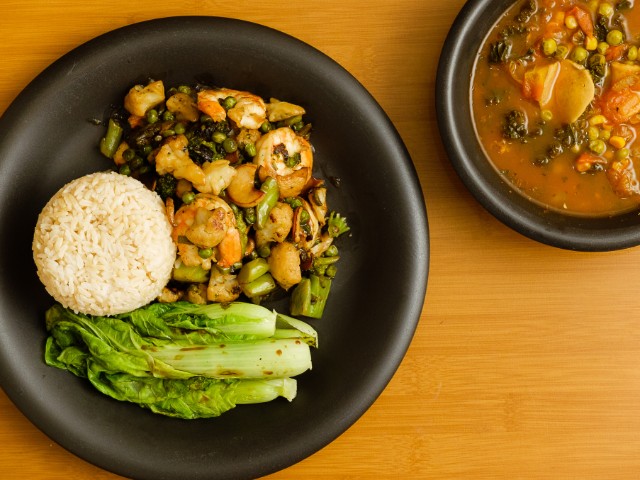Making homemade pasta is a culinary adventure that brings the comfort of Italy right into your kitchen. While it may seem daunting at first, the process is surprisingly straightforward and incredibly rewarding. With just a few ingredients and some basic techniques, you can create fresh, delicious pasta that will impress your family and friends. Let’s dive into how to make homemade pasta like a pro!
The Ingredients You Need
To make pasta, you’ll need only a few simple ingredients:
- Flour: The foundation of pasta. Use “00” flour for a silky texture, but all-purpose flour works well too.
- Eggs: Large eggs are best for richness. Each egg typically accounts for about 100 grams of flour.
- Salt: Adds flavor to your pasta dough.
- Water: Occasionally needed for consistency, depending on your flour.
The Basic Ratio
A classic pasta dough recipe follows a simple ratio:
- 100 grams of flour per 1 large egg. For example, if you’re making pasta for four, use 400 grams of flour and four eggs.
Making the Dough
Step 1: Prepare Your Workspace
Clear a large, clean surface and gather your ingredients. Make sure to have a bench scraper, rolling pin, and a pasta machine (if you have one) on hand. If you’re also interested in cooking with an air fryer, consider checking out the best air fryer cookbook for inspiration on complementary dishes.
Step 2: Create a Flour Well
- Pour the flour onto your work surface and make a mound.
- Create a well in the center, large enough to hold the eggs. It should look like a volcano.
Step 3: Add the Eggs
Crack the eggs into the well. Sprinkle a pinch of salt on top of the eggs.
Step 4: Mix the Dough
Using a fork, gently whisk the eggs, slowly incorporating the flour from the edges of the well. Continue until the dough starts to come together.
Step 5: Knead the Dough
Once the dough forms, use your hands to knead it. Here’s how to knead properly:
- Push the dough down and away from you with the heel of your hand.
- Fold the dough back over itself.
- Turn it a quarter turn and repeat the process.
Knead for about 10 minutes until the dough is smooth and elastic. If it’s too sticky, add a bit more flour; if it’s too dry, wet your hands and knead in a little water.
Step 6: Rest the Dough
Wrap the kneaded dough in plastic wrap or cover it with a damp cloth. Let it rest for at least 30 minutes at room temperature. This rest period allows the gluten to relax, making it easier to roll out.
Rolling Out the Dough
Step 7: Divide the Dough
After resting, divide the dough into four pieces to make it easier to roll out. Keep the pieces you’re not using covered to prevent them from drying out.
Step 8: Flatten and Roll
If using a rolling pin:
- Dust your surface with flour.
- Take one piece of dough and flatten it slightly with your hands.
- Roll it out evenly, turning it frequently, until it’s about 1/16 inch thick. Dust with flour as needed to prevent sticking.
If using a pasta machine:
- Set the machine to the widest setting.
- Feed the dough through the rollers, folding it in half and rolling it again several times to develop elasticity.
- Gradually decrease the thickness setting until the desired thinness is achieved.
Cutting the Pasta
Step 9: Choose Your Pasta Shape
Depending on the type of pasta you want to make, the cutting method will differ:
- Fettuccine: Roll the sheet up loosely and slice it into strips.
- Pappardelle: Make wider cuts for a broader noodle.
- Lasagna Sheets: Cut into rectangular shapes.
- Ravioli: Use a cutter to shape the dough and fill it.
Step 10: Dust and Separate
Dust your cut pasta with flour to prevent sticking and gently toss the pieces to separate them.

Cooking Your Pasta
Step 11: Boil Water
Fill a large pot with water and add a generous amount of salt. The water should taste like the sea. Bring it to a rolling boil.
Step 12: Cook the Pasta
Fresh pasta cooks quickly—usually in 2-4 minutes, depending on the thickness. Taste a piece to check for doneness.
Step 13: Reserve Some Pasta Water
Before draining the pasta, reserve about a cup of the starchy cooking water. This can help you adjust the consistency of your sauce later.
Step 14: Drain and Sauce
Drain the pasta and add it directly to your sauce, tossing to coat. If the sauce is too thick, add a little reserved pasta water until the desired consistency is reached.
Serving and Enjoying
Once your pasta is sauced, serve it immediately. Garnish with freshly grated cheese, herbs, or a drizzle of olive oil for an extra touch.
Tips for Perfect Pasta Every Time
- Practice Makes Perfect: Your first attempt may not be flawless, but with practice, your skills will improve.
- Experiment: Try adding different ingredients to your dough, like spinach or beet puree, to create colored pasta.
- Invest in Tools: While a rolling pin works fine, a pasta machine can make the process quicker and easier.
- Be Patient: Allow the dough to rest and don’t rush the kneading. This will ensure better texture and flavor.
Conclusion
Making homemade pasta is a rewarding experience that can elevate any meal. With a little practice, you can master the art of pasta making and impress your loved ones with delicious, fresh creations. So roll up your sleeves, gather your ingredients, and enjoy the process of making pasta like a pro. And if you’re looking to complement your homemade dishes, consider trying recipes from the best air fryer cookbook. Buon appetito!





